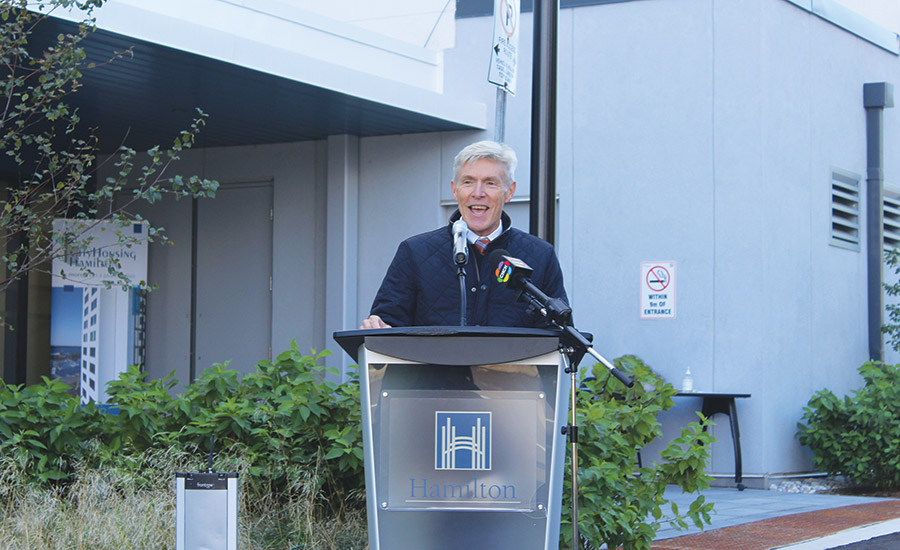ENR 2022 Top 25 Newsmakers
Tom Hunter: Championing High-Performance Buildings to Achieve Better Well-Being for Affordable-Housing Tenants

People who have worked with Hunter comment on his empathy for the people he serves, and his vision for finding a way to pair tenant well-being with high-performance buildings.
Photo courtesy of CityHousing Hamilton
Related Article:
Ken Soble Tower - 500 MacNab
Back to:
25 Top Newsmakers
With a background in long-term health care, Tom Hunter was tuned into the well-being of tenants being front and center when he shifted to running CityHousing Hamilton, Ontario’s affordable housing program as its chief executive officer.
Hunter, who had spent most of his professional career in health care, wanted to find a way at CHH to provide housing that remained affordable for tenants while also enhancing their social, emotional and physical well-being. Hunter mentions a comment he heard focused on the idea of shifting from thinking about public housing as a liability, to being a vibrant and sustainable part of a community. That vision is what guided him as CEO of CHH, and high-performance buildings seemed to be an approach that could make that vision a reality, he says.
Over time, following the ongoing work of local nonprofit InDwell, and through discussions with colleagues like CHH’s development manager, Sean Botham, as well as the leadership at ERA Architects, he landed on the Passive House standard, which is rigorous, some say challenging to meet, and requires both extensive planning and documentation. However, the efficiencies that are baked into a building that meets Passive House requirements make the living environment more comfortable, which was Hunter’s primary goal, he says.
“I saw [tenant comfort] as being very compatible with high performance,” Hunter explains. For example, a building designed and constructed to Passive House standards not only is more comfortable for tenants by better controlling noise and odors and designing to achieve more efficient heating and cooling, it also becomes less expensive to operate over time because it is more energy efficient. Those savings help tenants, who might not be able to afford the utility rate increases that are routinely passed on to tenants of condominiums and apartment buildings, he adds.
Advocating for Well-Being
Hunter became an advocate for using high performance building standards for CHH’s portfolio of some 1,200 properties whenever possible.
One of the first buildings was the 500 McNab/Ken Soble Tower building, an aging multiple-unit affordable housing building for seniors. The design and construction team led by PCL and ERA Architects put their heads together to find a way to retrofit the building to meet EnerPHit certification, which is the Passive House standard for retrofitted buildings. The project team used a nearly air-tight envelope on the building, achieving an air leakage rate of 0.235, says ERA principal Graeme Stewart. The building, completed in 2021, was named an ENR Global Best Projects award winner in 2022.
Stewart, who worked with Hunter and Sean Botham for five years to make their shared vision a reality, says that Hunter “saw the long-term vision of what housing should be and the care and attention required in housing at-risk seniors—that only the highest quality of comfort and climate resilience was acceptable.” He adds that not only did Hunter bring “great empathy to the community he served,” he also possessed the political acumen to bring the project to fruition.
Hunter has since moved on, back to his original professional love as CEO of Toronto’s Senior Housing Corp., but he has left his mark on Hamilton, and the work by CHH continues. “All the new developments, whether redevelopments, retrofits or modular builds, are all going to be built to the Passive House standard,” Hunter says. Currently, nine CHH buildings are in development.




